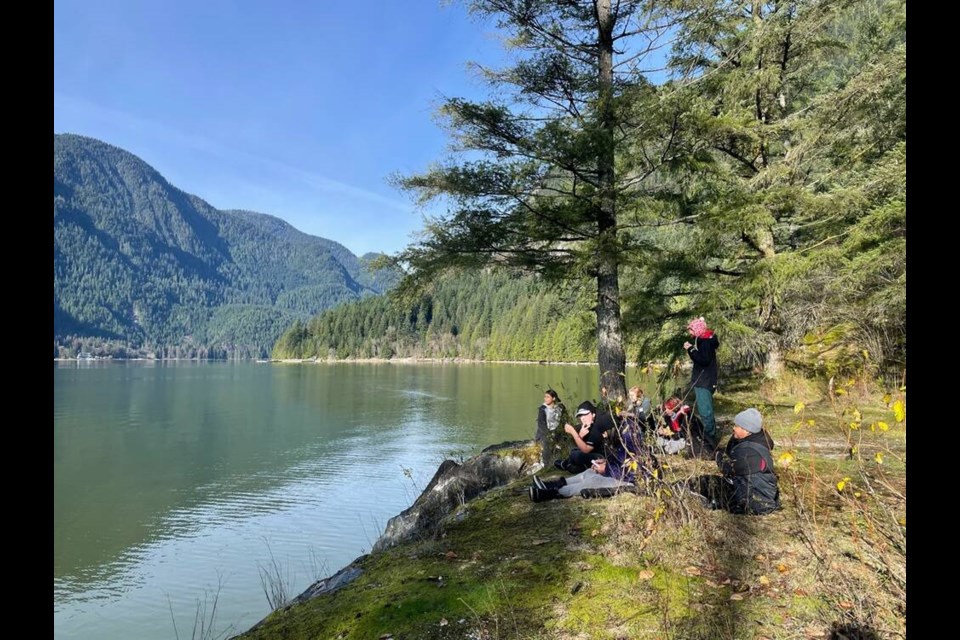A new study examining the historical decline of fish populations in Vancouver waters highlights the detrimental impacts urban development has had on the local environment, and way of life for First Nations communities.
The Rise of Vancouver and the Collapse of Forage Fish, published in December by Western Washington University, tracks the decrease in numbers of ocean forage fish like herring, smelt and eulachon between 1885 and 1920.
“We’re looking at a 99 per cent collapse of most of these key species,” said author Jesse Morin, adjunct professor at the University of British Columbia’s Oceans and Fisheries Institute.
In the study Morin details the thousands of years forage fish were sustainably harvested by the səlilwətaɬ (Tsleil-Waututh Nation) prior to the arrival of settlers, and the brief, 35-year period afterwards in which the species fell victim to industrialization.
“We can document that there was pure, consistent harvesting of these little fish species by the Tsleil-Waututh for at least 3,000 years, and there were no clear changes. No crashing populations, no extinctions, nothing like that,” he said.
“Then settlers show up by 1860, they are mass harvesting these species by the 1880s, and then they’re gone from the inlet by 1885. Twenty-five years to destroy something that a whole culture and society was based on for 3,000 years.”
The research, which examined historical and archival documents alongside archaeological evidence, found the sharp decline to be a result of invasive fishing methods – including settlers using dynamite to fish for herring – overfishing, habitat destruction and industrial pollution.
Gabriel George, the Tsleil-Waututh Nation’s director of treaty, lands and resources, said this marked a “very devastating period” in the Nation’s history.
“We’ve been severely impacted,” he said. “In many ways this is not the natural state, or not even close to the natural state, of the North Shore and of Vancouver. Only a few 100 years ago this was an ancient rainforest, and the waters were pristine. The inlets sustained us for thousands and thousands of years.”
Forage fish are “critically important” to the health of the Tsleil-Waututh Nation and the local ecosystem, said George.
“The herring run has traditionally been important. The time of year when it comes we’re stretching through winter, and so that fish coming into our waters would have been a very important food staple to our people. The oil is an important resource as well,” he said.
A decline in their populations extends across the food chain, George added. Less forage fish results in dwindling food sources for marine life like salmon or seals, resulting in declining prey for predators like killer whales. A vital facet of Indigenous wellbeing and culture, the loss of marine species would have a devastating impact on life for local First Nations, he said.
“It’s not separate in our way of being. When the oceans are toxic we too live in toxic environments, it’s not good for our health.”
Since 2019, the Tsleil-Waututh Nation has led multiple projects that focus on the restoration of fish populations, said Spencer Taft, the Nation’s cumulative effects project manager.
Environmental teams monitor and map fish spawning activity with annual dive surveys, improve habitats via the planting of kelp and eelgrass in the inlet, and work with local Streamkeepers groups to remove creosote-treated pilings from local waters.
“Since 2019 we’ve seen increasing populations in the Indian Arm, but it’s still a tiny fraction of what the historical populations would have been in the area,” said Taft.
“It’s still a nascent, young, re-emerging population and, because the population is so new and vulnerable, there is increasing concern over impacts.”
Taft said the efforts by local First Nations and environmental groups are being counteracted by the work of local developers. One particular blow to conservationists came in 2019, when dozens of the first herring spawn to be recorded in the Indian Arm were killed by pile driving at a nearby marine terminal, he said.
While there is “lots of optimism” with witnessing positive trends in population restoration, it is incidents like this that that make him hesitant to celebrate restoration success too soon, he said.
For the Tsleil-Waututh Nation, progress feels as though it is in a one step forward, two steps back cycle, said George.
“Even though we’ve been working hard to rehabilitate our waters, and rehabilitate the land, and we’ve spent millions of dollars and put hundreds of human hours into these projects, things like this are still happening and affecting the work, and affecting the wellness that we want for the inlet,” said George.
“It is our wellness as Indigenous people that is connected to the land and the water.”
Mina Kerr-Lazenby is the North Shore News’ Indigenous and civic affairs reporter. This reporting beat is made possible by the Local Journalism Initiative.




